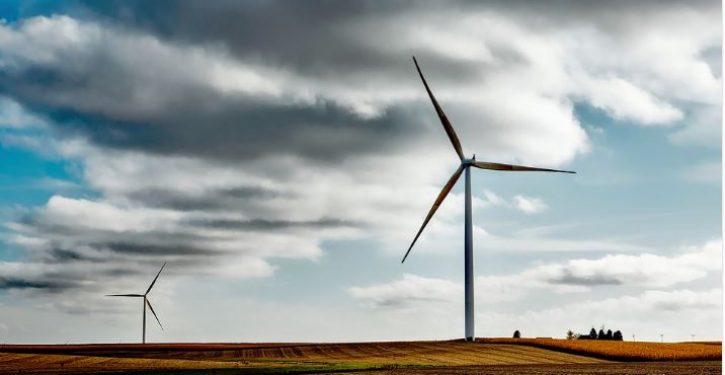
Wind turbines don’t last forever, and they leave behind fiberglass blades that landfills often won’t accept. Moreover, the “blades have low energy content, and burning fiberglass emits dangerous pollutants,” notes the Kleinman Center for Energy Policy. In short, notes CNN, “wind energy has a massive waste problem.”
36% of wind turbines generating electricity in Spain will need to be decommissioned by 2028 as they become obsolete. That’s 7,500 wind turbines and 20,000 blades that will have to be dismantled and disposed of somehow. Those wind turbines were installed before 2005, but their lifespan is only 20 to 25 years.
Their steel, copper wires, and generators can be reused. But not their fiberglass blades, which only a few landfills in Spain will accept.
The European Commission is doubling spending on these so-called clean technologies by 2030, with the goal of having 45% of energy be derived from renewable sources.
Despite such mushrooming subsidies, TVP World reports that “the wind industry in Europe, including Spain, is facing billion-euro losses, mainly due to competition from China.”
Wind energy poses other challenges for nature as well. In 2022, the biggest U.S. utility that generates wind power pleaded guilty to federal crimes for killing 150 eagles.
Other forms of alternative energy also make no economic sense in much of the world. Solar energy subsidies have caused the deforestation of thousands of acres in snowy Massachusetts, but solar power does not provide reliable energy there, given the frequently thin blue and snowy gray skies. “Since 2010, over 5,000 acres of natural and working lands have been destroyed for solar development in Massachusetts, resulting in the emission of over half a million metric tons of CO₂— more than the annual emissions of 100,000 passenger cars,” the Massachusetts Audubon Society stated in a summary of its study with Harvard Forest. “Thousands of acres of forests, farms, and other carbon-rich landscapes are being converted to host large-scale solar,” the report noted. “The removal of trees undercuts the state’s requirement to reduce emissions by 2050. This is because trees are an effective carbon removal tool,” notes The College Fix.
Solar panels result in more environmental contamination than nuclear power plants. As an environmentalist notes, “solar panels require 17 times more materials in the form of cement, glass, concrete, and steel than do nuclear plants, and create over 200 times more waste,” such as “dust from toxic heavy metals including lead, cadmium, and chromium.” Nuclear plants emit no air pollution, only harmless steam. Unlike wind farms, nuclear power plants don’t kill birds. The biggest U.S. utility that generates wind power pleaded guilty to federal crimes for killing 150 eagles.
There are sunny parts of the world where solar power makes obvious economic sense. But it makes no sense for the government to subsidize solar power in cloudy, overcast areas of northern Europe.
Nuclear power, unlike wind energy, produces steady, reliable power, regardless of the weather. Many years ago, France and Sweden replaced most of their fossil-fueled electricity with nuclear power, and as a result, ended up emitting less than a tenth of the world average of carbon dioxide per kilowatt-hour. “Nuclear power is the safest form of energy we have, if you consider deaths per megawatt of energy produced,” notes Yale University’s Steven Novella. “Wind turbines, surprisingly, kill more people than nuclear plants,” notes Michael Shellenberger.
Nuclear power is best for the environment, notes Reason Magazine’s Ronald Bailey.



